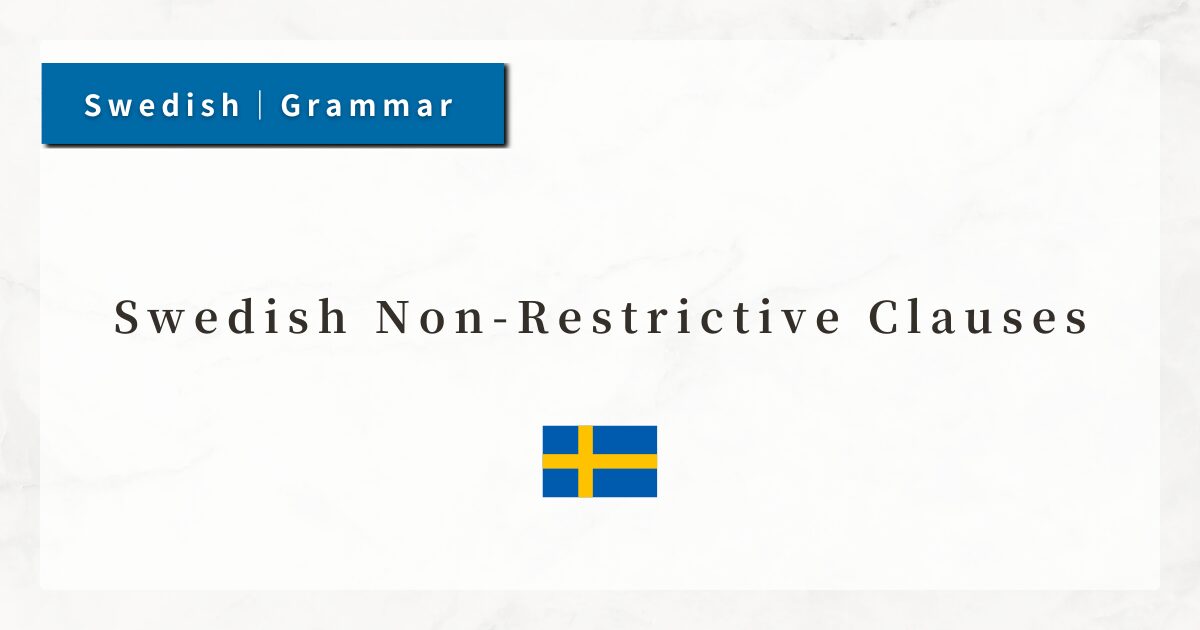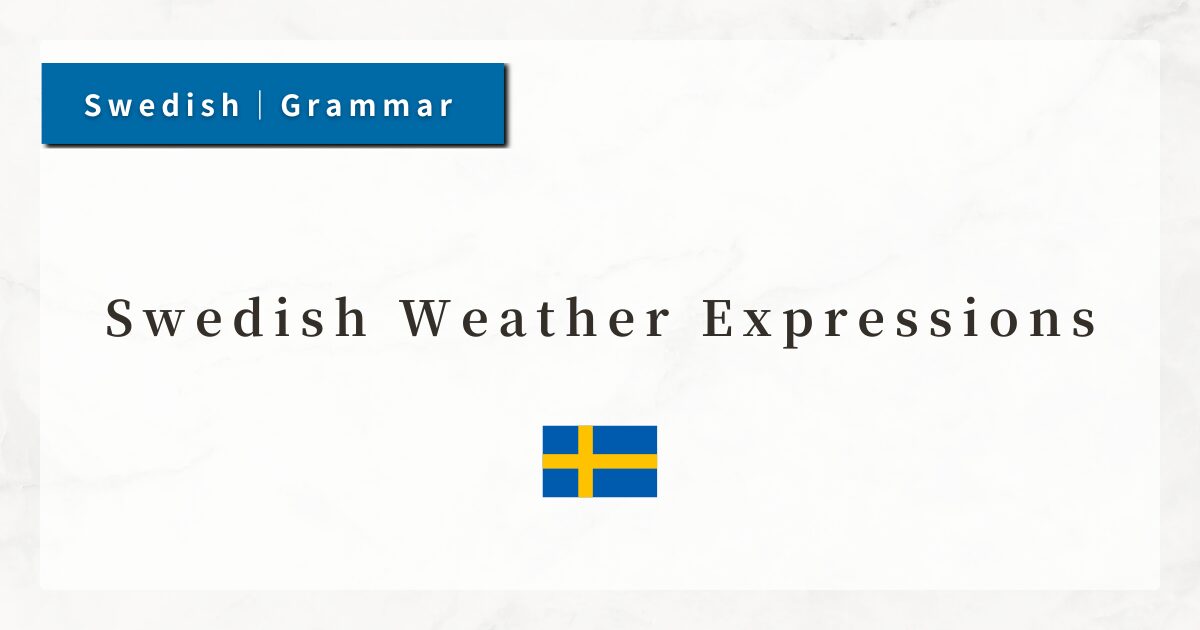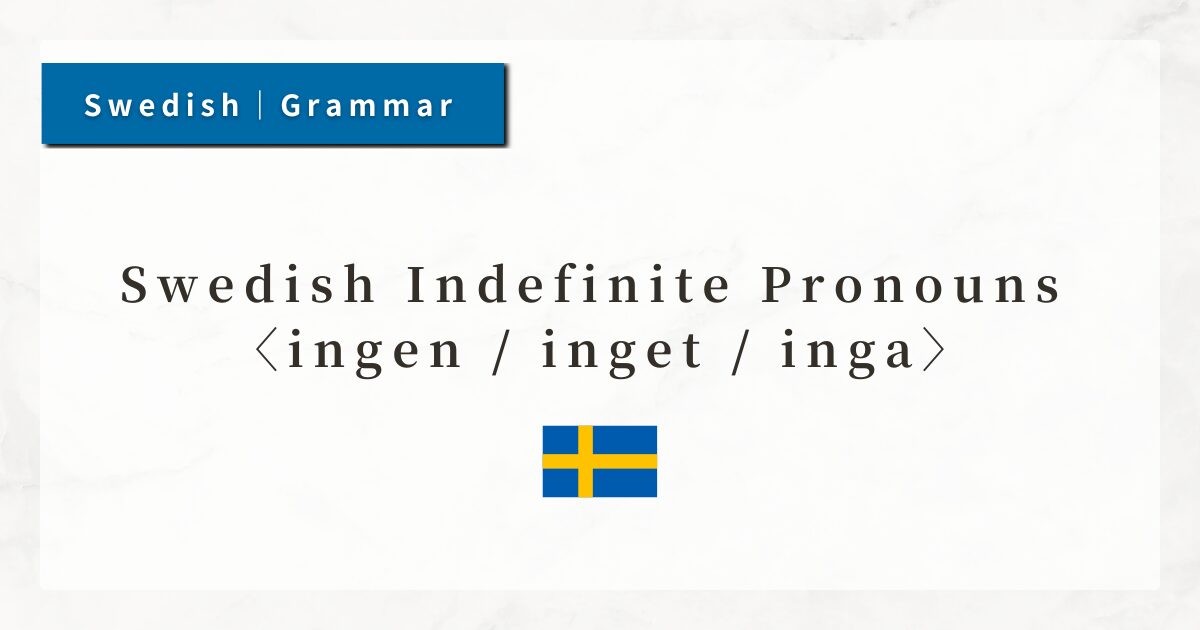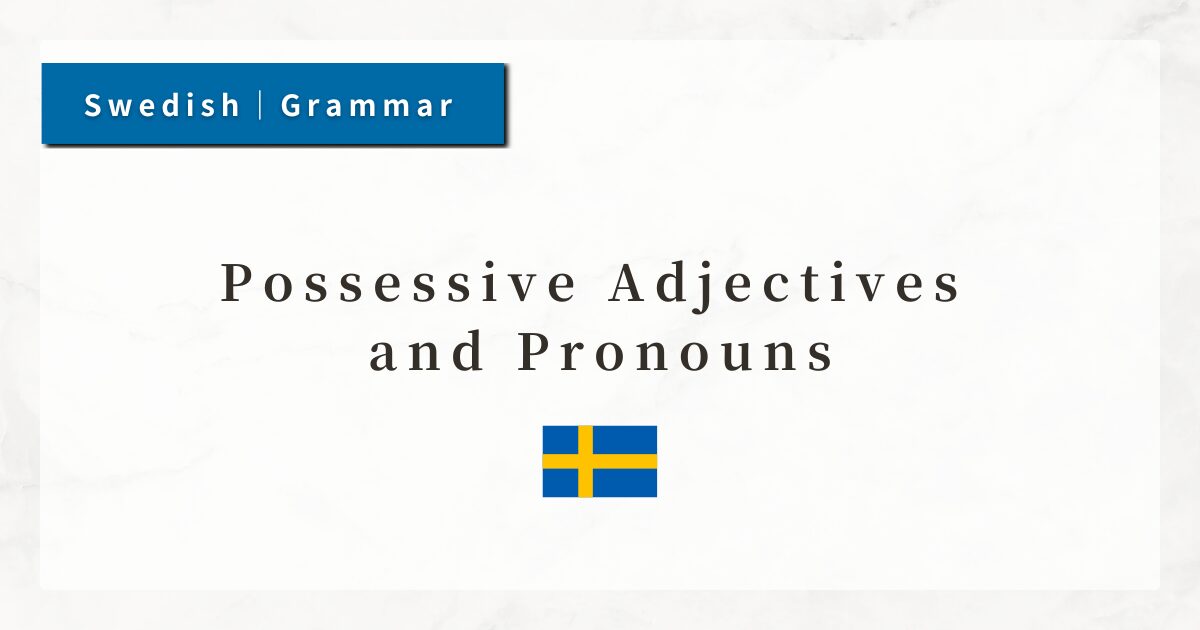#59 Swedish Non-Restrictive Clauses|Roles and Usage Explained

Relative clauses in Swedish serve to add information to a noun.
Among them, the non-restrictive clause does not define or identify the noun, but instead provides additional explanation.
In this lesson, I will explain non-restrictive clauses in Swedish, comparing them with restrictive clauses.
1. Difference Between Restrictive and Non-Restrictive Clauses
Swedish relative clauses are divided into two main types: restrictive and non-restrictive.
- Restrictive clause:
→ Adds information necessary to specify which noun is being referred to. - Non-restrictive clause:
→ Adds information not to identify, but to further describe or explain the noun.
Let’s compare the two with examples:
Restrictive (identifying the antecedent):
- Studenten som sitter där borta heter Anna.
(The student who is sitting over there is named Anna.)
Here, the relative clause introduced by som specifies “which student.” Without it, the reference would be unclear.
Non-restrictive (adding extra information):
- Anna, som sitter där borta, är min vän.
(Anna, who is sitting over there, is my friend.)
Here, “Anna” is already identified, and the relative clause simply provides extra information. Even without the clause, the sentence “Anna är min vän” still makes sense.
Thus, the non-restrictive clause serves as supplementary information that helps the overall understanding of the sentence.
2. How to Form Non-Restrictive Clauses
2-1. Separated by a comma
In Swedish, non-restrictive clauses are set off by a comma (,) after the noun.
- Min bror, som bor i Uppsala, studerar medicin.
(My brother, who lives in Uppsala, studies medicine.)
The comma signals to the reader or listener that this is additional information, not restrictive.
2-2. Use of Relative Pronouns
In non-restrictive clauses, som is the most common relative pronoun. In written or formal contexts, vilken/vilket/vilka may also be used.
- Stockholm, vilken är Sveriges huvudstad, har många sevärdheter.
(Stockholm, which is the capital of Sweden, has many attractions.)
In everyday use, som is standard, while vilken is more typical of academic writing, newspapers, or official documents.
3. Features and Points to Note
3-1. The clause can be removed without losing meaning
A non-restrictive clause is only supplementary. If you remove it, the main sentence still works.
- Karin, som är min granne, jobbar som läkare.
(Karin, who is my neighbor, works as a doctor.)
Even without the relative clause, Karin jobbar som läkare is a complete sentence.
3-2. Be careful to distinguish from restrictive clauses
Mixing up restrictive and non-restrictive clauses changes the meaning significantly.
- Restrictive:
Den man som står vid dörren är min lärare.
(The man who is standing by the door is my teacher.)
Here, the relative clause is essential to identify which man is being referred to.
- Non-restrictive:
Min lärare, som står vid dörren, väntar på oss.
(My teacher, who is standing by the door, is waiting for us.)
Here, “my teacher” is already specific, and the relative clause is only additional description.
4. Summary
- A non-restrictive clause adds supplementary information rather than defining the noun.
- It is always separated by a comma (,).
- In speech, som is the most common, while in formal writing, vilken/vilket/vilka may also be used.
- The key difference: a non-restrictive clause can be removed without affecting the core meaning, unlike a restrictive clause.




